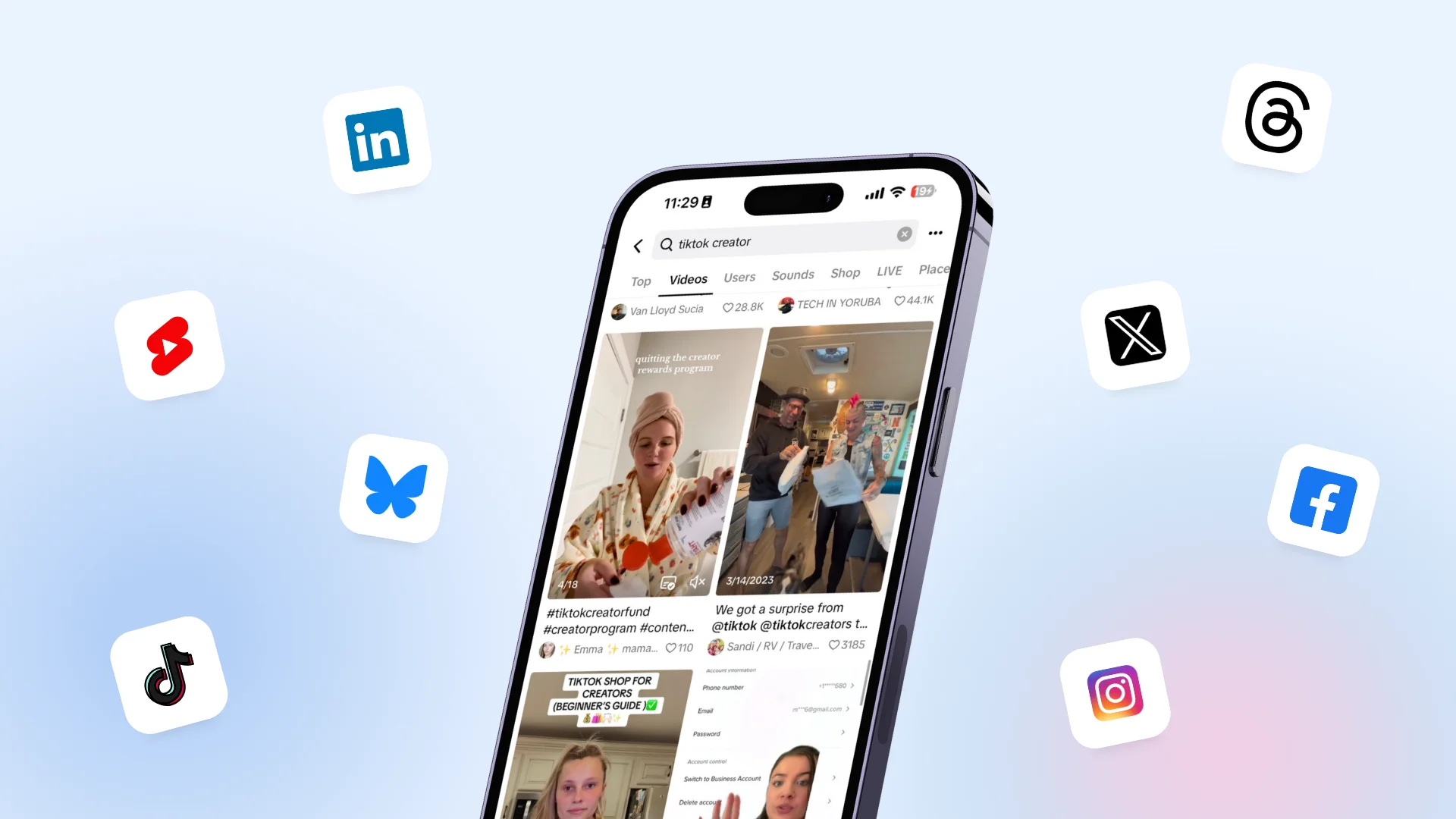New

Turn Your DMs Into Lead Gen!
Learn how to collect lead data from your DMs such as email addresses, phone numbers, and more right from your social inbox. If you are not yet automating your DMs your competitors are outpacing you.

How Something Social Saved 75% of Their Time and Increased Revenue by 15%
See how a fast-growing agency improved operations, cut down hours of manual work, and unlocked new revenue opportunities with Vista Social.
New

50 Unique Social Media Ideas for Consistent Content Creation
Discover 50 unique social media post ideas to engage your audience, grow your brand, and maintain a consistent content strategy with ease!

Mastering Content Reuse: The Key to a Consistent and Sustainable Posting Strategy
Direct Message (DM)
In the digital world, “DM” typically stands for “Direct Message.” A DM is a private stream of communication between social media users. When you send a direct message, only you and the recipient can see the content.
Instagram, Facebook and Twitter all have their own direct messaging platforms. The restrictions for messages vary for each platform. For instance:
- On Facebook, users must “like” a page before they can send them a DM.
- On Instagram, DMs can be sent in a group up to 15 people
- Twitter allows for DMs to up to 50 people and requires a “follow.”
Direct messaging (DM) on marketing
Direct messaging is a powerful tool in a brand’s ability to create relationships with customers. DMs are private, intimate and personalized. Companies use direct messaging for the following benefits:
- Spark instant networking opportunities: Connect with partner brands, potential influencers and brand ambassadors.
- Improve customer engagement: Give your clients a way to reach your business beyond your email address or phone number.
- Build meaningful relationships: Send custom messages to prospects to improve your brand reputation.
- Better customer experiences: Set up a direct messaging strategy with chatbots to help customers quickly resolve their questions.
When to use DMs in marketing
Social media is crucial to building and maintaining business reputations today. One of the key benefits of social media is its ability to strengthen customer relationships. DM strategies are an effective way to build on these relationships, particularly with the help of a smart inbox tool. Companies use DMs to:
Respond to negative reviews: Handling a negative comment on your social media page in the privacy of a DM reduces the damage done to your brand reputation. Solve problems quickly through direct messaging, then encourage your customer to share their results on your public profile.
- Offer customer support: 79% of customers prefer live chat options for customer service. The immediacy of being able to talk to someone straight away – even if it’s a chatbot, improves customer experience.
- Exchange private information: If a client makes a request on your social media page and you need private details from them, a DM continues the conversation on a more secure level.
- Connect with industry influencers: Direct messaging is an excellent way to connect with influencers, ambassadors and partners you want to work with in the future.
Try Vista Social for Free
A social media management platform that actually helps you grow with easy-to-use content planning, scheduling, engagement and analytics tools.
Get Started NowBest practices for better DMs
As customer experience becomes the a key differentiating factor for modern brands, DMs are growing in popularity. With direct messaging, companies offer memorable and convenient service to customers. However, it’s important to use direct messaging with caution. Remember to:
- Be careful not to send promotional messages: Sending promotions via direct messaging doesn’t play well with users. Customers must be able to “opt-in” to marketing messages.
- Respond promptly: Direct Messaging is all about real-time communication. Your customers will expect quick responses, even if they’re automatically generated.
- Use chatbots: Bots in your social media DMs help customers to serve themselves, so you can focus your attention on the clients that need you most.
- Make conversations personal: Give a personal touch to the DMs that aren’t automated. Use the customer’s name and address their issue with care.
- Manage messages carefully: With so many DMs across various social platforms, a message management tool is essential. Vista Social’s Smart Inbox makes it easier to handle your messages and respond to them quickly.

stronger relationships on social
Vista Social helps you understand and reach your audience, engage your community and measure performance with the only all-in-one social media management with easy-to-use features like publishing, engagement, reviews, reports and listening.